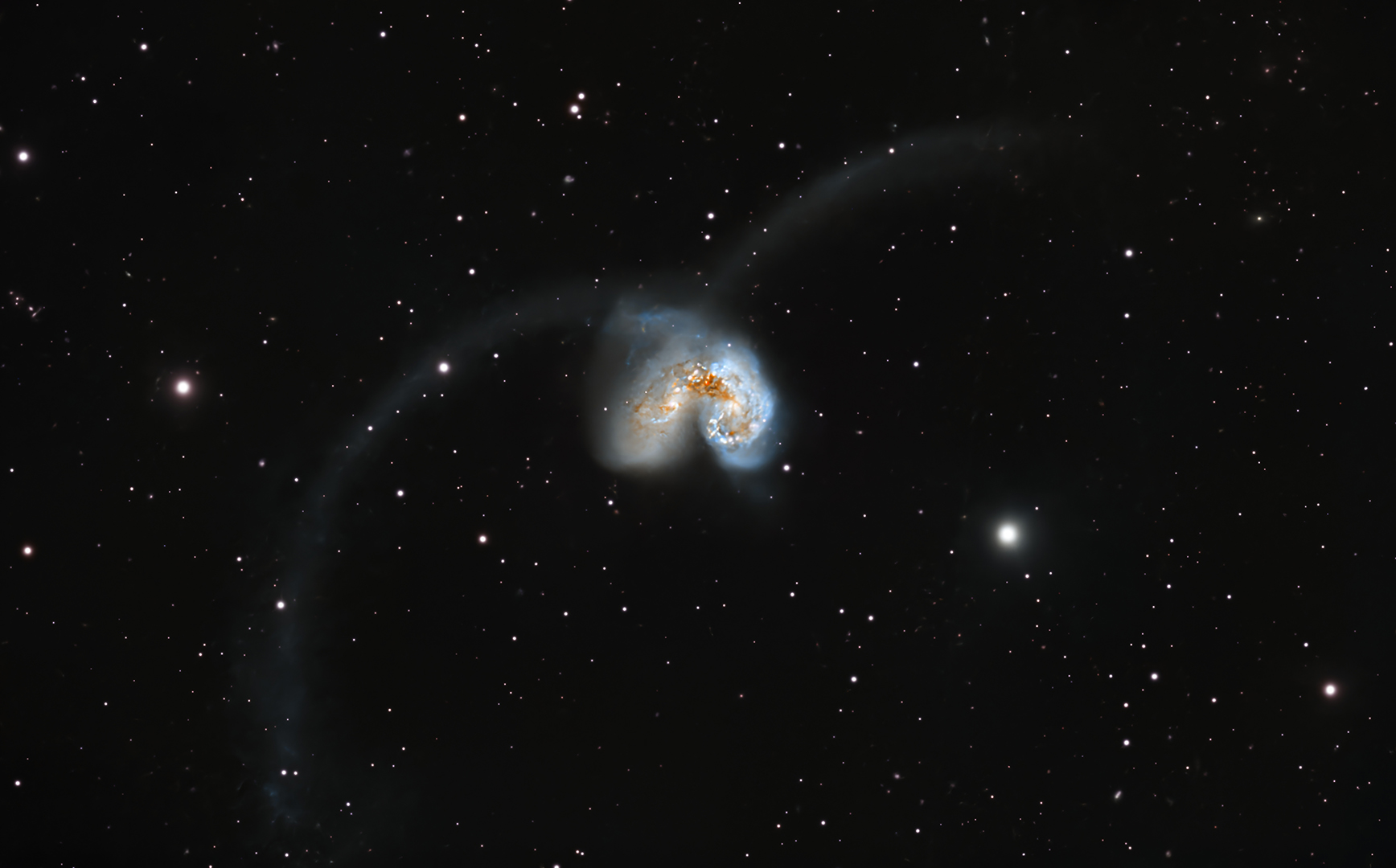
Wednesday, Jun 4, 2025
NGC4038 and NGC4039
By Breno Silva
Located approximately 45 million light-years from Earth in the constellation Corvus, the pair of interacting galaxies known as the Antennae Galaxies are designated NGC 4039 (on the left) and NGC 4038 (on the right). These two galaxies are in the midst of a dramatic collision, where their immense gravitational forces are tearing at each other’s structures. This cosmic encounter has flung out enormous, curved streams of stars, gas, and dust—known as tidal tails—into space, stretching far beyond the galaxies themselves. These spectacular arcs resemble the long, thin appendages of an insect, which is why the system is popularly known as the "Antennae Galaxies." This galactic merger is a vivid example of what happens when galaxies collide. The immense gravitational interactions compress vast clouds of gas, triggering intense regions of star formation, often referred to as starburst regions. Observations of the Antennae Galaxies reveal thousands of young, bright star clusters scattered throughout the interacting galaxies. Over time, NGC 4039 and NGC 4038 are expected to fully merge, ultimately forming a single, larger elliptical galaxy—a fate that may also await our own Milky Way when it eventually collides with the Andromeda Galaxy.
ZWO ASI 2600MC DUO
L-Pro
Ioptron Cem60
C11 Edge
Pixinsight, Lightroom
